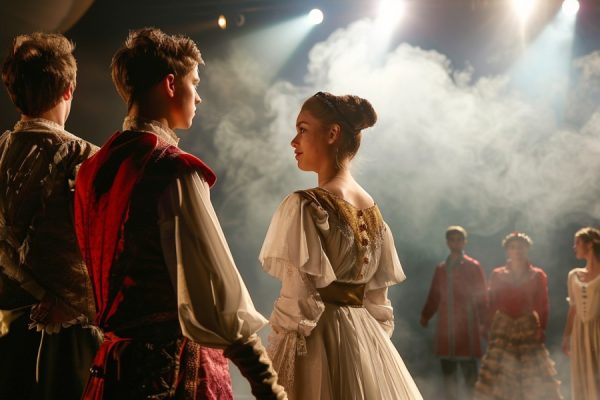Mastering Plot Development: An In-Depth Guide for New Writers
Embarking on the journey of writing a story is an adventure in itself, and at the heart of this adventure is the art of plot development. This comprehensive guide is designed to take you deeper into the nuances of crafting a plot, helping you to create stories that are not just read, but felt and remembered.
Understanding Plot Fundamentals
Defining Plot
A plot is more than a series of events; it’s a tapestry woven from characters’ actions, reactions, emotions, and transformations. It’s the backbone of your story, giving it direction and purpose. While there are forms of writing that aren’t dependent on plot, if you are looking to craft a narrative tale of some form, structured events are generally necessary in order to hold a reader’s attention.
Essential Plot Elements
1. Introduction: Sets the stage. Example: In J.K. Rowling’s “Harry Potter”, the introduction establishes the magical world and Harry’s mundane life with the Dursleys.
2. Rising Action: Builds the conflict. Example: In Tolkien’s “The Lord of the Rings”, the rising action includes the journey of the fellowship and the growing threat of Sauron.
3. Climax: The high point. Example: In Harper Lee’s “To Kill a Mockingbird”, the trial verdict serves as a climax, bringing tension to a head.
4. Falling Action: Aftermath of the climax. Example: In “The Great Gatsby” by F. Scott Fitzgerald, this includes the unraveling of Gatsby’s life.
5. Resolution: The wrap-up. Example: In “Pride and Prejudice” by Jane Austen, the resolution sees the main characters overcoming social barriers to find love.
Deepening Your Plot
Generating Ideas
Start with a concept, a question, or a scenario. For instance, consider the simple idea: “What if a child discovers they have a magical ability?” This concept gave rise to the entire Harry Potter series. If you’re stuck on this step, see our guide to ideation, which includes a wealth of hints and tips to encourage your creative spark to ignite.
Character Development
Create multi-dimensional characters. Think about Frodo Baggins in “The Lord of the Rings” – his journey from a naive hobbit to a hero carrying the weight of the ring showcases profound character development that drives the plot. For in-depth tips surrounding this part of the writer’s pre-production process, check out our guide to character development.
Building Conflict and Tension
Conflict can take many forms, from internal struggles to epic battles. For example, in “The Hunger Games” by Suzanne Collins, Katniss faces both the physical conflict of the games and the internal conflict of survival versus humanity. Without conflict, a story tends to have no meaningful stakes and therefore is likely to lose a reader’s interest quickly. If you’re like yo know more about internal conflict, external conflict or interpersonal tension, check out our guide to building tension.
Plot Structures
Consider the Three-Act Structure, used in “Star Wars”: Act 1 introduces the world and characters, Act 2 escalates the conflict and includes major challenges, and Act 3 resolves the conflict. This is not the only structural form for a narrative tale, but it is very common in storytelling, wherein audiences are often seeking a beginning, middle and clearly resolved ending.
Utilising Subplots
Subplots add layers to your story. In “To Kill a Mockingbird”, the subplot involving Boo Radley adds mystery and depth, eventually intertwining with the main plot for a powerful resolution. See our guide to creating effective sub-plots for details of how to weave these valuable story elements into your narrative.
Advanced Tips and Techniques
– Detailed Scene Crafting: Visualize each scene. In “The Shining” by Stephen King, detailed scenes create an immersive and terrifying atmosphere.
– Effective Foreshadowing: Leave subtle hints. In “Fight Club” by Chuck Palahniuk, subtle clues hint at the story’s twist.
– Masterful Plot Twists: Change the game in a believable way. The twist in Agatha Christie’s “Murder on the Orient Express” reshapes the entire story.
– Balanced Pacing: Keep your readers engaged. “The Da Vinci Code” by Dan Brown uses short chapters and cliffhangers to maintain a rapid pace.
Practical Exercises and Analysis
– Dissecting Classics: Analyze the plot structure of your favorite novels. How does Jane Austen build up Elizabeth and Darcy’s relationship in “Pride and Prejudice”?
– Creative Prompts: Use prompts to practice plot development. E.g., “A character finds a mysterious diary that changes their life.”
– Plot Development Workshop: Take a basic idea and expand it into a detailed plot outline. For instance, develop a story around a lost heirloom, exploring its history and impact on the characters who find it.
Additional Resources
1. Books:
– “The Writer’s Journey” by Christopher Vogler: Explores mythic structure for writers.
– “The Elements of Story” by Francis Flaherty: Focuses on the nuances of narrative craft, with a focus on non-fiction storytelling.
2. Websites:
– [NaNoWriMo]: National Novel Writing Month, a community and resource for writers.
– [Reedsy]: Offers articles and webinars on plot development and more.
3. Writing Tools:
– Trello: Organize plot points and chapters.
– Evernote: Capture and organise ideas on the go.
Conclusion
Plot development is a skill that deepens with practice and patience. It’s about finding the balance between structure and creativity, logic and imagination. Every story you write is a step forward in mastering this art. Remember, the most compelling plots are those that resonate emotionally with your readers, taking them on a journey they won’t forget.
Happy Writing!





-1 Comment-
This blog post looks really cute.